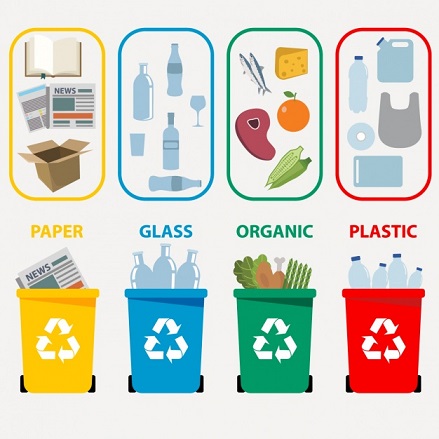May 17 recycling day
On May 17, World Recycling Day is celebrated with the objective of raising awareness in society about the importance of treating waste properly, so as not to contribute more to climate change, and be able to make small but important decisions to protect the environment.
What is recycling day?
“Recycling” is defined as the process by which a material or product that has already been used undergoes treatment to obtain a raw material or a new product. That is a waste that becomes something new, which allows us to make better use of natural resources, reducing the impact on the environment of our consumption habits and devise creative ways to redesign our objects so that they can serve us once again.

What is the origin of the recycling symbol?
The origin of the recycling symbol goes back to Gary Anderson, a senior at the University of Southern California, who was the winner of a design contest organized by the Container Corporation of America as part of the first Earth Day in 1970. Gary Anderson created a logo based on the Möbius strip, which is a repetitive figure with no apparent end, so Gary adapted that concept into a triangle with arrows where each of its arrows represents one of the steps in the recycling process: collecting the materials, the recycling process, and the purchase of the recycled products, so that the system is repetitive and endless.
Recycling glass, plastics, papers, and other materials should not be an option, but a habit settled in society and in our routines, so we would help the environment in a way that would be part of our lives.
According to experts, recycling is key to achieving a sustainable environment free of pollution, which is one of the main threats to people and ecosystems in the medium term and it is estimated that the pollution of seas and rivers may become one of the main causes of death in the year 2050.
According to 2018 figures, each square mile of ocean has around 46,000 plastics and microplastics. This material accumulates in seas and beaches, threatening the existence of marine species, birds, and plants. And not only that: integrated in this ecosystem, plastic easily passes into the food chain of animals and therefore of humans, since much of the fish and seafood we eat, or the salt with which we accompany our food can have microplastics, so technically every day we put in our mouth bacteria and toxic substances derived from plastic that end up in our body.
In the sense of awareness more and more citizens and institutions are joining, although sadly this is a problem which humanity has ignored for so long that even when being so many is still insufficient and, far from being recycled, many plastic and non-biodegradable wastes continue to end up in the sea.
Recycling is our main and best weapon against the pollution we have generated over the years and it is our obligation as inhabitants of this world to ensure that it remains habitable for future generations, as well as maintaining the environment for all creatures that depend on us and our actions, so join the movement and recycle, you can support in a way as easy as it can be to separate the garbage.





